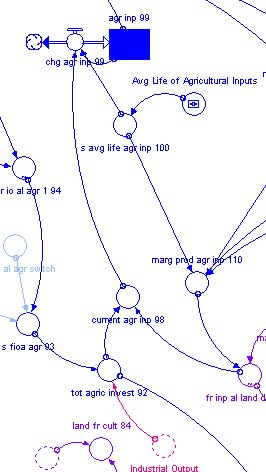
Agricultural inputs in turn are determined by how much is invested in agriculture, which in turn is affected by industrial output:
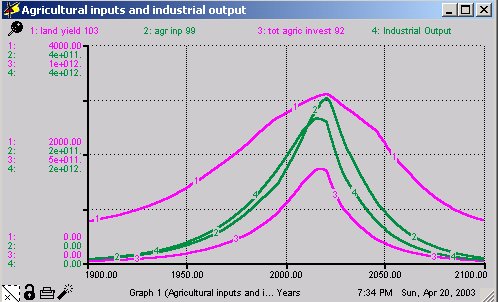
There are too many unknowns to be able to predict human behavior;
If unpleasant futures are predicted, people can choose to change.
Possibly, the unpleasant futures are not a real threat ("Malthus in, Malthus out").

The two primary positive feedback loops:
population-population growth
investment-production
doubling time = 70/percentage growth rate
exponential growth in a limited environment means you can approach the limit quite suddenly
All currently industrialized socities experienced this
Initially, birth and death rates both high
Death rates drop first, then birth rates
Result is population boom followed by nearly stable population
Demographic transition usually accompanies industrial development
However, precise mechanisms of demographic transition are unknown
Resource use is limited by both sources (running out of resources) and sinks (Earth can't absorb pollution)
Indications are that pollution limits will be the real limits.
Markets handle source limits better than pollution limits.
World food production tripled 1950-1985 due to improved yields
According to World3, food production drops off. Why?
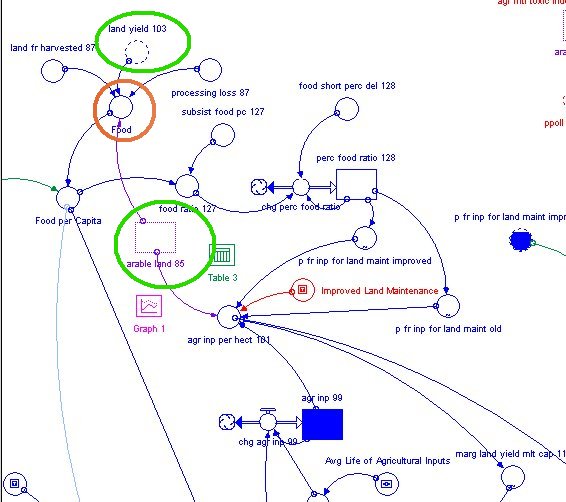
Arable land is created by developing previously unused land, and destroyed by erosion and urban sprawl. But the total amount of arable land does not collapse:
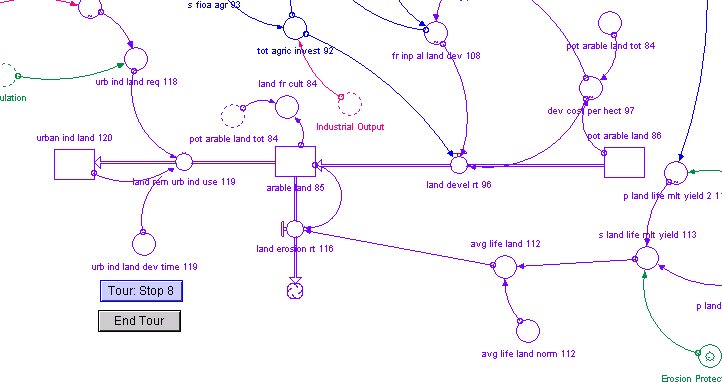
Food production depends on the amount of arable land and the yield per hectare. Let's graph these variables:
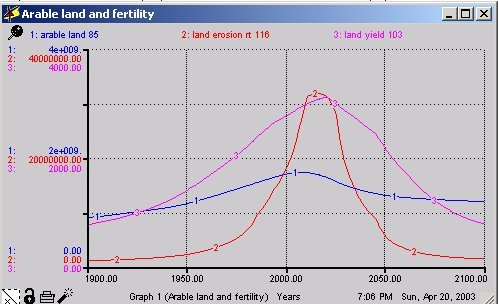
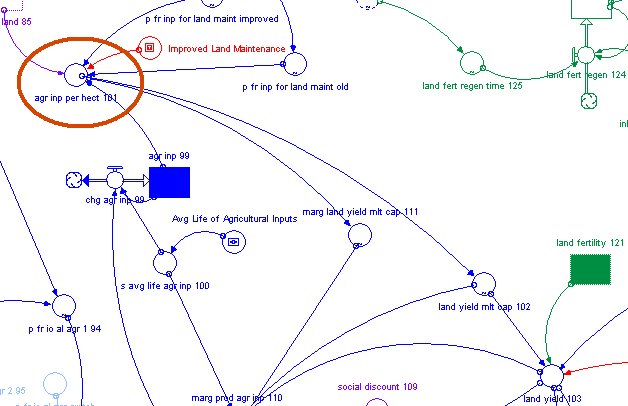
Land yields are determined by several factors, but the most important one is agricultural inputs such as fertilizer. Let's graph this variable:
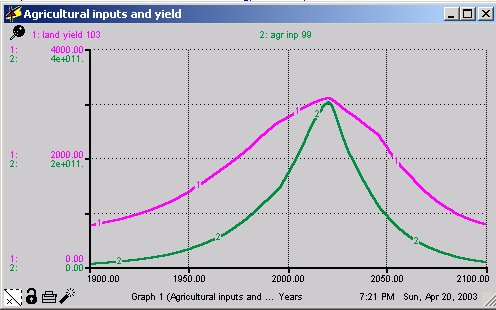

|
Agricultural inputs in turn are determined by how much is invested in agriculture, which in turn is affected by industrial output: 
|
Let's examine the factors that influence industrial output:
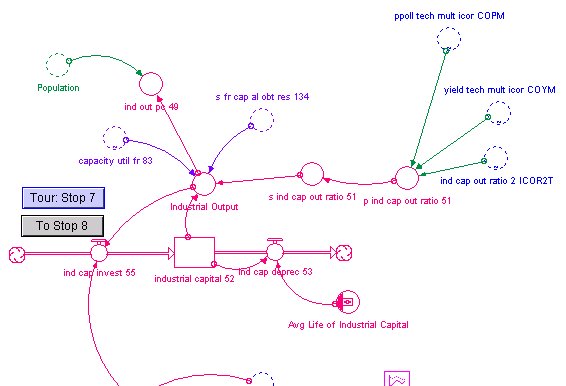
Now put these in a graph to detect the cause of the problem:
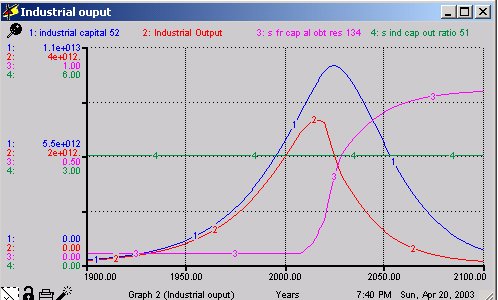
At last we find the root cause of the problem! Observe these two graphs:
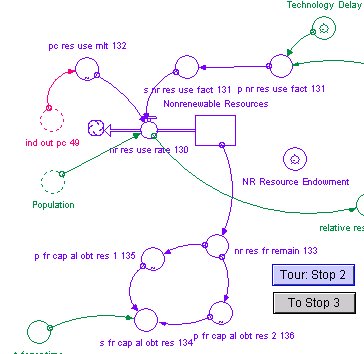
| World3 presumes that as natural resources are used up, a larger and larger fraction of total output is used to extract the remaining resources. The two circles "p_fr_cap_al_obt_res_1" and "p_fr_cap_al_obt_res_2" both represent the fraction of capital allocated to obtaining resources under different circumstances. The key variable s_fr_cap_al_obt_res is switched to one or the other. |
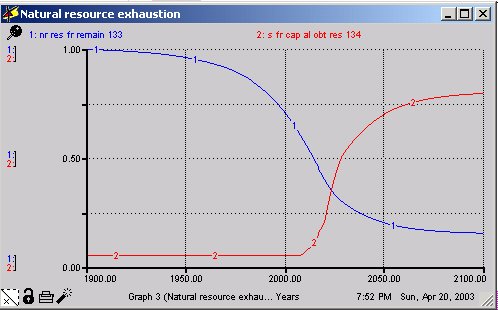
| Here's the result. As resources are exhausted, more and more of the world's industrial capital gets diverted to extracting resources. Less and less is left for agriculture, leading to food shortages and the nightmare scenario. |
Quite likely it is not, because the World3 model does not include resource switching. See the Web reading by Jerry Taylor of the (libertarian) Cato Institute.
Maybe. Unfortunately, there is also pollution to worry about. Here are some readings: